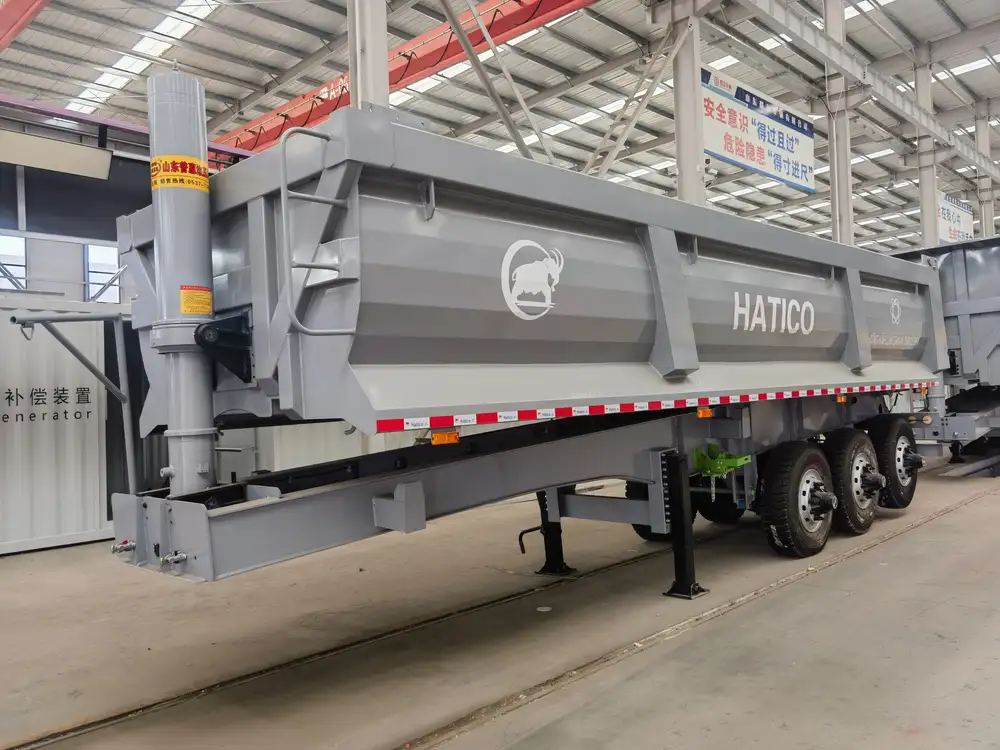Dump trailers are indispensable tools in the construction, landscaping, and waste management industries. They offer efficient transportation solutions for various materials, ranging from dirt and gravel to debris and scrap metal. In this guide, we delve into an important question for many users: How many yards can a 16×6 dump trailer hold? This inquiry is crucial for ensuring optimal usage of hauling capacity and maintaining operational efficiency.
Table of Contents
Dimensions and Specifications of a 16×6 Dump Trailer
- 1.1 Understanding Trailer Dimensions
- 1.2 Weight Capacity Considerations
Calculating the Volume of a Dump Trailer
- 2.1 Formula for Calculation
- 2.2 Converting Cubic Feet to Cubic Yards
Factors Influencing Load Capacity
- 3.1 Material Density
- 3.2 Weight Distribution
Practical Applications and Use Cases
- 4.1 Landscaping and Construction
- 4.2 Waste Management
Maintenance Tips for Optimal Performance
- 5.1 Regular Inspections
- 5.2 Best Practices for Loading
Conclusion
1. Dimensions and Specifications of a 16×6 Dump Trailer

1.1 Understanding Trailer Dimensions
A 16×6 dump trailer typically measures 16 feet in length and 6 feet in width. These dimensions are critical when determining the volume of material that can be loaded onto the trailer.
The trailer’s side height also plays a role in calculating total capacity. Generally, the side height may range from 1.5 feet to 3 feet; thus, it’s essential to factor this into our calculations.
Example:
- Length: 16 feet
- Width: 6 feet
- Side Height: 2 feet
1.2 Weight Capacity Considerations
The weight capacity of a dump trailer is often dictated by its Gross Vehicle Weight Rating (GVWR), which is the maximum allowable weight of the trailer when fully loaded. A 16×6 dump trailer usually has a GVWR ranging from 7,000 lbs to 14,000 lbs, depending on the model and material construction quality. Exceeding this weight can lead to safety hazards and potential legal issues.
2. Calculating the Volume of a Dump Trailer

2.1 Formula for Calculation
The formula for calculating the volume (capacity) of a rectangular space like a dump trailer is simple:
[ \text{Volume} = \text{Length} \times \text{Width} \times \text{Height} ]Using our example values:
[ \text{Volume} = 16 \text{ ft} \times 6 \text{ ft} \times 2 \text{ ft} = 192 \text{ cubic feet} ]2.2 Converting Cubic Feet to Cubic Yards
To convert cubic feet into cubic yards (since many materials are sold by the cubic yard), use the following conversion:
[ 1 \text{ cubic yard} = 27 \text{ cubic feet} ]Therefore:
[ \text{Cubic Yards} = \frac{\text{Cubic Feet}}{27} ]In our case:
[ \text{Cubic Yards} = \frac{192}{27} ≈ 7.11 \text{ cubic yards} ]Consequently, a 16×6 dump trailer can hold approximately 7 cubic yards of material when fully loaded to a height of 2 feet.
3. Factors Influencing Load Capacity

3.1 Material Density
Different materials have different densities, which directly influence how much can be loaded payload-wise. For instance:
- Sand: Approximately 1.2 tons per cubic yard
- Gravel: Approximately 1.5 tons per cubic yard
- Topsoil: Approximately 1.0 ton per cubic yard
Loading a ton of a denser material can quickly lead to exceeding the trailer’s weight limit, even if the volume limits have not yet been reached.
3.2 Weight Distribution
Proper weight distribution is key. If the load is uneven, it can cause swaying during transit, adversely affecting driving safety. Ensuring that the weight is evenly distributed across the trailer’s axle is crucial for stability.
4. Practical Applications and Use Cases

4.1 Landscaping and Construction
In landscaping and construction, a 16×6 dump trailer is commonly utilized for transporting:
- Soil,
- Mulch,
- Rocks,
- Debris from construction sites.
This size is particularly advantageous for maneuverability in tighter spaces compared to larger trailers.
4.2 Waste Management
For waste management contractors, a 16×6 dump trailer serves as an effective solution for hauling construction waste, yard debris, and recyclable materials. Its capacity allows for efficient trips to and from waste collection sites.
5. Maintenance Tips for Optimal Performance

5.1 Regular Inspections
To ensure longevity and safety, conducting regular inspections is essential. Check for:
- Tire condition,
- Brake functionality,
- Structural integrity of the trailer bed and sides.
5.2 Best Practices for Loading
Proper loading techniques include:
- Distributing weight evenly,
- Avoiding overloading in height or weight,
- Ensuring that heavier materials are loaded first to keep a low center of gravity.
6. Conclusion
In summary, a 16×6 dump trailer offers a practical solution for many hauling needs, with an approximate capacity of 7 cubic yards. Understanding the dimensions, weight limits, and proper usage can significantly impact operational efficiency and safety. For operators seeking a reliable and efficient hauling solution, investing in a high-quality dump trailer is vital to meeting project demands while adhering to logistical requirements. Whether during construction or waste management tasks, a dump trailer stands as an essential tool, making the transportation of materials both effective and manageable.



